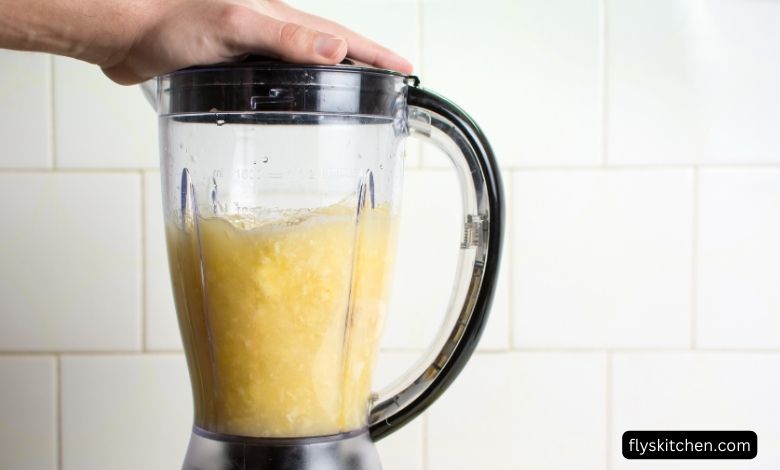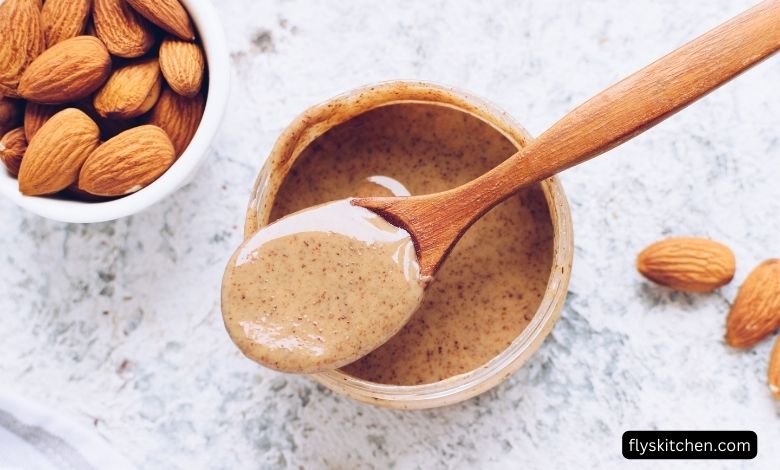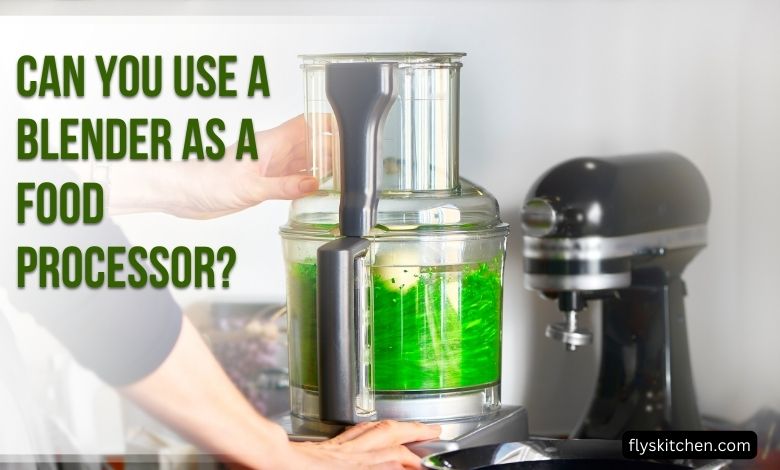Kitchen appliances can be expensive, especially if you want high-quality tools that will last. Many home cooks wonder if they can get by using a blender instead of a food processor for chopping, mixing, and blending. While the two appliances have some overlap in function, there are key differences that impact what you can make. Read on to learn whether a blender can stand in for a food processor.
Contents
- 1 What’s the Difference Between a Blender and a Food Processor?
- 2 Can You Chop Food in a Blender?
- 3 Can You Knead Dough in a Blender?
- 4 Can You Slice/Shred Food in a Blender?
- 5 Can You Puree Food in a Blender?
- 6 Can You Make Sauces in a Blender?
- 7 Can You Make Nut Butter in a Blender?
- 8 Frequently Asked Questions
- 9 Conclusion
What’s the Difference Between a Blender and a Food Processor?
Blendtec blenders and Vitamix blenders dominate the high-powered blender market, while brands like Cuisinart, Hamilton Beach, and KitchenAid lead in food processors. But what sets the two appliances apart?
- Blade design – Blenders have blades that point upward from the bottom. Food processors have wider, flatter stainless steel blades that spin from a disc positioned on top of the work bowl.
- Processing style – Blenders process contents through high-speed rotation, creating friction heat that allows them to liquefy ingredients. Food processors use an up and down chopping motion.
- Batch size – Standard blenders have a capacity of 48-64 ounces. Mini processors start around 3-4 cups while full-size models go up to 14 cups or more.
- Controls – Blenders usually have preset programs and variable speed settings. Food processors let you control slicing, shredding, chopping, mixing, and kneading through pulse buttons and speed adjustments.

Can You Chop Food in a Blender?
Chopping soft fruits, cooked meats, and steamed veggies is no problem in a blender. The high-powered blades will break the food down into small pieces with the friction of the rotating blades. But you won’t get consistently sized chunks like you would in a food processor.
Raw veggies and meat are another story – a blender may simply bounce them around without achieving the right consistency. Try chopping no more than 2 cups of food at once in a blender for the best results. Go for a coarse puree rather than precisely diced pieces.
Can You Knead Dough in a Blender?
Kneading dough requires an appliance that mimics the push/pull motion of hand kneading. A food processor can mix, knead, and shred dough in seconds with the right attachments. But dough tends to collect under blender blades without circulating properly.
You can make dough in a blender by blending the wet and dry ingredients to form a ball. Let the dough rest before hand kneading briefly. This works for simple doughs with 5 cups of flour or less.
Can You Slice/Shred Food in a Blender?
The fixed, upward-facing blades on a blender can’t properly slice or shred ingredients. Food processors have interchangeable discs that allow you to shred cheese, slice veggies, and more.
If you need shredded or sliced foods, try grating and chopping by hand or getting a mandoline slicer for minimal processing.
Can You Puree Food in a Blender?
Of all food processor capabilities, blenders match or excel at pureeing. The blender’s high-powered blades circulate food to puree to silky smoothness. Food processors often leave bits of fruit, veggies, or cooked grains unless strained after.
Aim for no more than 4 cups of ingredients when pureeing in a blender. Cut food into 1-inch chunks before adding liquids like milk or broth and any seasonings. Start on low speed to break up contents before increasing power.
Can You Make Sauces in a Blender?
From pesto to hummus to tomato sauce, blenders are perfect for mixing and emulsing ingredients into sauces. The key is adding liquids like oil and water slowly to emulsify into a smooth consistency. Hot liquids may need to cool slightly to avoid a mess.
When making sauces, follow this order:
- Add herbs, veggies, and seasonings
- Blend to break down solids
- Slowly add liquid ingredients like oil or vinegar while blending
- Add cream, cheese, or nut butters and blend well after each addition
- Add thickeners like xanthan gum or cornstarch at the end

Can You Make Nut Butter in a Blender?
Creamy homemade nut butters are easy to make in a blender with some tips:
- Use raw nuts, preferably soaked overnight and well-dried
- Add just 1-2 tablespoons oil to help processing
- Start blending on low, stopping to scrape down the sides
- Increase to highest speed until smooth, about 5 minutes total
The powerful blades and circulation create smooth nut butter not possible in a food processor. Just blend in batches for large quantities, allowing the motor to rest between.
Frequently Asked Questions
Here are some common questions about using a blender as a food processor:
Can you make pie crust in a blender?
Pie dough requires the mixing and kneading functions of a food processor to properly incorporate fat into the flour. Make pie crust by hand or use a food processor instead of attempting it in a blender.
Can you crush ice in a blender vs. a food processor?
Blenders are actually better than food processors at crushing ice into fine snow-like texture thanks to the blades and circulation patterns. Just add 1-2 cups ice and 1/4 to 1/2 cup liquid and blend on high until smooth.
Can you grind grains in a blender?
With the right blade attachment, high-speed blenders like Blendtec and Vitamix grind grains into flour. Soak grains like wheat berries overnight, then grind in small batches into a fine powder. Food processors don’t generate enough grinding power.
Can you whip cream in a blender?
Whipping heavy cream into whipped cream or stiff peaks is possible in a blender. Chill the blender jar and add chilled cream. Start on low and slowly increase speed, stopping to scrape down sides until you reach the desired consistency after 2-3 minutes.
Can you beat egg whites to stiff peaks in a blender?
Yes, you can beat egg whites to stiff peaks in a blender just as you would with electric mixer beaters. Ensure egg whites are at room temperature before blending to allow them to achieve maximum volume.
Conclusion
While a high-powered blender can perform some basic food processing tasks, there are clear benefits to investing in a dedicated food processor if you prepare lots of dough, slices/shreds, or precisely chopped ingredients. Still, a quality blender can fill in when you need to chop, puree, crush, blend, or whip up a storm. With smart techniques, you can expand your blender’s usefulness in the kitchen.

